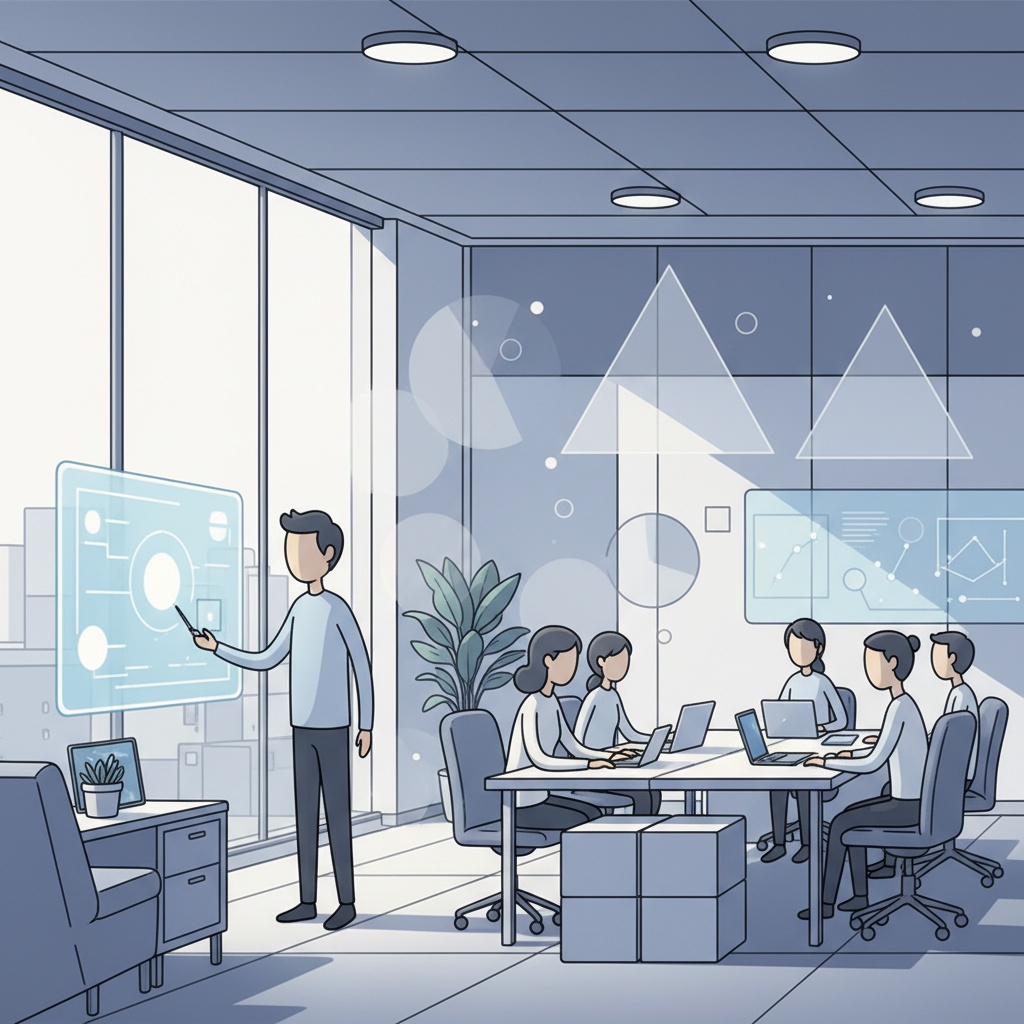
Supporting Dignity: Comprehensive Guide to Welfare Benefits for Low-Income Emiratis
Reading time: 12 minutes
Table of Contents:
Understanding the UAE Welfare System
Looking to navigate the social safety net in the UAE? You’re not alone. The Emirates has developed one of the Gulf region’s most comprehensive welfare systems specifically designed to support its citizens facing financial hardship.
The UAE’s welfare system stands on a foundational principle: no Emirati citizen should be left behind. This commitment reflects the nation’s cultural values of family support and community solidarity, transformed into institutional frameworks that provide tangible assistance.
As Sheikh Mohammed bin Rashid Al Maktoum once noted: “The UAE was established to serve its people. No project or program should be more important than humans, who remain the focus of all development plans.”
The welfare landscape has evolved significantly since the UAE’s formation in 1971. What began as informal community support mechanisms has developed into sophisticated government programs addressing multiple dimensions of wellbeing—from housing security to healthcare access.
But here’s the straight talk: Many eligible Emiratis don’t access their full entitlements simply because they’re unaware of what’s available or find the application processes daunting. Let’s change that.
Eligibility Requirements for Emirati Citizens
Before diving into specific programs, let’s clarify who qualifies for social welfare support in the UAE. The system primarily serves UAE nationals who meet specific income and circumstance criteria.
Basic Eligibility Criteria
At its core, eligibility hinges on these fundamental requirements:
- Confirmed UAE citizenship (with valid family book)
- Monthly household income below the established threshold (typically AED 25,000, but varies by program and emirate)
- No significant assets that could provide sufficient income
- Registration with relevant authorities in your emirate of residence
However, priority status is typically granted to these vulnerable groups:
- Widows and divorced women
- People of determination (with disabilities)
- Elderly citizens (60+ years)
- Families of prisoners
- Orphaned children of Emirati parents
Documentation Requirements
When applying for welfare benefits, you’ll typically need to prepare:
- Original and copy of your Emirates ID
- Family Book (Khulasat Al Qaid)
- Salary certificate or pension documentation
- Bank statements for the past 6 months
- Tenancy contract or property ownership documents
- Medical reports (for health-related benefits)
- Marriage or divorce certificates (when applicable)
Pro Tip: Create a digital folder with scanned copies of all these documents. Most application systems now accept digital uploads, and having everything prepared can reduce application processing time by up to 40%.
Key Social Welfare Programs
The UAE offers a multi-faceted approach to social support, with programs addressing different dimensions of wellbeing. Let’s break down the major categories:
Housing Support Initiatives
Housing security represents one of the most significant welfare investments by the UAE government.
Sheikh Zayed Housing Program
This flagship initiative provides interest-free loans of up to AED 1.2 million for housing construction or purchases. For families in the lowest income brackets, non-repayable housing grants may be available.
Real-world example: Ahmed, a 34-year-old father of three with a monthly income of AED 18,000, received a 25-year interest-free loan of AED 950,000 through the program. His monthly repayment of AED 3,167 represents about 17% of his income—substantially below market mortgage rates that would have required 30-40% of his monthly earnings.
Housing Allowance Program
For those who don’t qualify for full housing grants, monthly housing allowances ranging from AED 2,500 to AED 13,000 (depending on family size and emirate) help bridge the affordability gap.
Accommodation Maintenance Program
This often-overlooked benefit provides funds for essential home repairs and renovations, with priority given to safety-related issues and accommodations for family members with special needs.
Financial Assistance Programs
Direct financial support forms the backbone of the UAE’s welfare approach.
Social Security Benefit
This monthly stipend supports citizens without sufficient income sources. Recent reforms have increased the minimum payment to AED 5,000 per month for individuals, with additional allowances of AED 3,500 per dependent.
Unemployment Benefits
Introduced in 2022, the unemployment insurance scheme provides temporary financial support for up to six months while recipients actively seek new employment. The benefit typically covers 60% of the basic salary from the last position, with a maximum cap of AED 20,000 monthly.
Debt Relief Fund
This specialized program addresses personal debt burdens for citizens facing financial hardship. The fund negotiates with creditors and can provide partial or complete loan forgiveness in qualifying cases.
Case study: Maryam, a 41-year-old divorced mother of four, accumulated AED 180,000 in personal loans following her divorce settlement. The Debt Relief Fund negotiated a 40% reduction with her creditors and established an affordable 5-year repayment plan for the remainder, preventing potential legal consequences.
Healthcare Benefits
The UAE’s approach to healthcare support ensures that financial limitations never prevent access to essential medical services.
Thiqa Health Insurance
This comprehensive health insurance program for UAE nationals covers:
- Preventive care and screenings
- Outpatient services
- Hospital admissions
- Emergency treatments
- Prescription medications
- Specialized care for chronic conditions
Low-income citizens receive enhanced coverage with reduced or eliminated co-payments.
Treatment Abroad Program
For specialized medical conditions requiring treatment unavailable domestically, this program covers treatment costs at approved international medical facilities, along with travel and accommodation expenses for the patient and a companion.
| Welfare Program | Eligibility Income Threshold | Average Benefit Value | Application Success Rate | Processing Time |
|---|---|---|---|---|
| Social Security Benefit | Below AED 25,000/month | AED 8,000-15,000/month | 78% | 30-45 days |
| Housing Grant | Below AED 20,000/month | AED 800,000-1,200,000 | 62% | 90-180 days |
| Debt Relief | Case-by-case evaluation | 40-70% of outstanding debt | 45% | 60-120 days |
| Healthcare Support | Universal for citizens | 100% coverage (varies by income) | 96% | 7-14 days |
Navigating the Application Process
The application journey can seem overwhelming, but breaking it down into manageable steps makes it navigable.
Step-by-Step Application Guide
- Initial Assessment: Contact your local Ministry of Community Development (MOCD) office or social affairs department for pre-application guidance.
- Documentation Gathering: Compile all required documents as outlined in the eligibility section.
- Application Submission: Applications can now be submitted through multiple channels:
- Online via the MOCD website or app
- In-person at MOCD service centers
- Through the Tamm service platform (Abu Dhabi)
- Interview Process: Most programs require an in-person interview to verify circumstances.
- Home Visit: For housing-related benefits, expect a home assessment visit.
- Decision Notification: Decisions are typically communicated through SMS, email, and the application portal.
- Benefit Activation: Approved benefits are usually activated within 30 days of approval.
Quick Scenario: Imagine you’re a recently widowed mother of three with a monthly income of AED 12,000. Your application journey might begin with a social worker consultation to identify which benefits package best addresses your situation—likely including social security supplements, housing assistance, and educational support for your children.
Digital Application Platforms
The UAE has invested heavily in digital transformation, making welfare applications increasingly accessible:
- MOCD Smart App: Available on iOS and Android, this application allows for document uploads, application tracking, and benefit management.
- UAE Pass Integration: Single sign-on verification streamlines identity verification across government services.
- Digital Notifications: Automated updates at each stage of the application process.
Pro Tip: The digital platforms typically offer faster processing times—approximately 40% quicker than paper-based applications. However, don’t hesitate to request in-person assistance if you’re uncomfortable with digital technology. Every service center has dedicated staff to help with application navigation.
Common Challenges and Solutions
Even with the UAE’s well-developed welfare system, applicants often encounter barriers. Let’s address the most common challenges and practical solutions.
Documentation Challenges
Challenge: Missing or outdated documentation is the leading cause of application delays.
Solution: Before starting any application, request a document pre-check from your local social affairs office. They can provide a personalized checklist based on your specific circumstances, identifying potential documentation gaps before formal submission.
Navigation Complexity
Challenge: With multiple programs across different government entities, determining which benefits to apply for can be confusing.
Solution: Schedule a consultation with a social benefits advisor through the MOCD. These specialized staff can conduct a comprehensive needs assessment and create a coordinated application strategy—often allowing you to apply for multiple benefits simultaneously.
For example, Fatima, a 38-year-old divorced mother in Sharjah, initially applied only for basic social security assistance. After consultation with a benefits advisor, she discovered eligibility for five additional support programs, increasing her total benefit value by 170%.
Welfare Program Utilization Rates Among Eligible Emiratis
Success Stories and Case Studies
The true impact of the UAE’s welfare system is best understood through individual stories of transformation.
From Social Support to Self-Sufficiency
Saeed’s Journey
At 42, Saeed found himself unemployed with three dependent children after his construction management position was eliminated. Initially hesitant to seek government assistance, his financial reserves depleted rapidly, forcing him to overcome his reluctance.
Saeed’s welfare journey included:
- Immediate financial stabilization through social security benefits (AED 12,500 monthly)
- Enrollment in the Absher program’s vocational retraining initiative
- Six-month housing payment relief while completing retraining
- Job placement assistance resulting in employment with a government contractor
Within 14 months, Saeed transitioned from full dependency on social welfare to complete self-sufficiency with a position offering a 15% higher salary than his previous employment.
His reflection: “The support wasn’t just financial—it was psychological. Knowing my family wouldn’t face immediate hardship gave me the mental space to focus on rebuilding our future rather than just surviving the present.”
Multi-Generational Support
The Al Nuaimi Family Experience
For the Al Nuaimi family, welfare support addressed complex multi-generational needs:
- Housing modifications for the elderly grandmother with mobility challenges
- Specialized medical coverage for a child with developmental disabilities
- Educational grants for two university-aged children
- Vocational training for the primary income earner
This coordinated approach prevented the cascading effects of financial strain from impacting multiple generations simultaneously. Five years later, the family has achieved remarkable stability, with both university students now employed and contributing to household expenses.
The Future Landscape of Emirati Social Support
The UAE’s welfare system continues to evolve in response to changing social needs and economic realities.
Emerging Trends and Innovations
Several developments are reshaping the welfare landscape:
- Predictive Support Models: AI-powered systems are beginning to identify vulnerable citizens before crisis points, enabling proactive intervention.
- Integration of Public and Private Support: New frameworks encourage corporate participation in social welfare through matched funding and skills development programs.
- Self-Sufficiency Pathways: Enhanced focus on transitional support that builds capabilities rather than creating dependency.
- Blockchain for Benefit Distribution: Pilot programs utilizing blockchain technology are improving transparency and reducing administrative overhead in benefit distribution.
As Sheikh Abdullah bin Zayed Al Nahyan observed: “The next chapter in our social development will focus not just on providing for immediate needs, but on creating sustainable pathways to self-reliance and dignity.”
Policy Developments to Watch
Recent government announcements signal important forthcoming changes:
- Expanded housing loan programs with adjusted income thresholds (expected implementation: Q1 2024)
- Enhanced support for entrepreneurship among welfare recipients
- Streamlined application processes with unified eligibility assessments
- Greater emphasis on preventative measures to address root causes of financial vulnerability
Your Empowerment Pathway: From Application to Advancement
Accessing welfare benefits is not about dependence—it’s about creating a stable foundation for future prosperity. The UAE’s system is designed as a transitional support mechanism, not a permanent solution.
Here’s your strategic roadmap for maximizing the effectiveness of welfare support:
- Comprehensive Assessment: Begin with a thorough evaluation of all available benefits rather than focusing on a single program.
- Documentation Mastery: Create a complete, organized documentation portfolio that can be efficiently submitted across multiple applications.
- Capability Development: While receiving benefits, actively pursue skill enhancement opportunities that improve long-term employment prospects.
- Regular Reassessment: Schedule quarterly reviews of your benefit portfolio to ensure you’re receiving appropriate support as your circumstances change.
- Transition Planning: Work with social development officers to create a structured plan for gradually reducing benefit dependency as your situation improves.
Remember, the true measure of the UAE’s welfare system isn’t how many citizens it supports—it’s how many it empowers to achieve independence.
As you navigate this journey, consider this question: How might temporary support today enable you to contribute more meaningfully to your family and society tomorrow?
The UAE’s commitment to its citizens remains steadfast, but the ultimate goal transcends immediate relief. It’s about cultivating resilient, self-sufficient families that form the foundation of a prosperous nation for generations to come.
Frequently Asked Questions
How do changes in income affect my ongoing benefits?
Income changes must be reported within 30 days to your benefits coordinator. Increases in household income typically don’t result in immediate benefit termination; instead, most programs implement a gradual reduction approach. For example, social security benefits typically decrease by 50% of any income gain, allowing you to experience net financial improvement while transitioning toward self-sufficiency. Some programs, particularly housing benefits, offer a 6-12 month grace period before adjustments are implemented, providing stability during career transitions.
Can non-Emirati spouses of UAE citizens qualify for welfare support?
While non-Emirati spouses cannot directly access most welfare programs in their own name, they are factored into family-based benefit calculations. For example, a non-Emirati spouse with medical needs would be covered under the family’s healthcare provisions, and their presence increases the housing allowance calculations. Additionally, non-Emirati spouses in low-income families may qualify for specialized integration programs offering language training, cultural orientation, and vocational preparation. The Ministry of Community Development can provide family-specific guidance during your initial consultation.
How are welfare benefits affected if I temporarily reside outside the UAE?
Extended absence from the UAE (generally exceeding 6 consecutive months) typically triggers a suspension of most welfare benefits, with some important exceptions. Healthcare coverage for approved overseas treatment continues uninterrupted, and educational grants for students studying abroad remain active with proper documentation. For other benefits, you must notify authorities before departure to avoid potential overpayments that would require repayment. Upon your return to the UAE, suspended benefits can usually be reinstated within 30 days through a simplified reactivation process rather than a complete reapplication.

Article reviewed by Elena Morales, Retail Expansion Assistant | Helping European Brands Enter UAE Malls, on May 15, 2025




